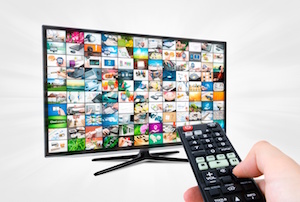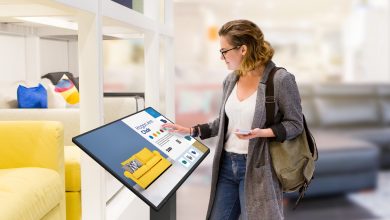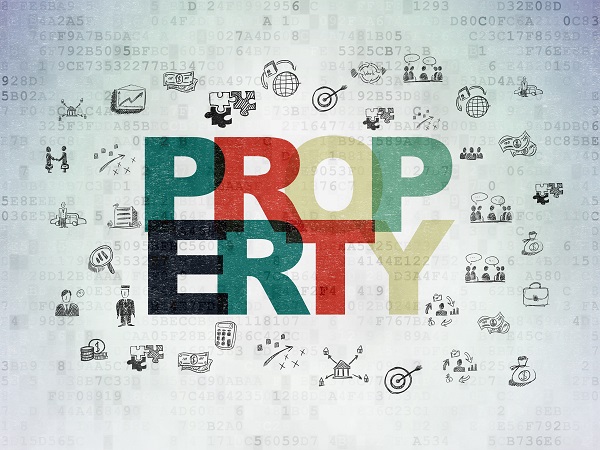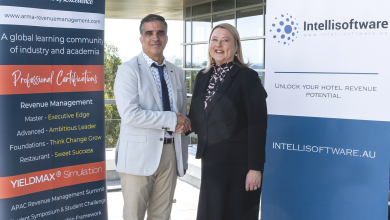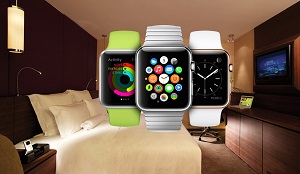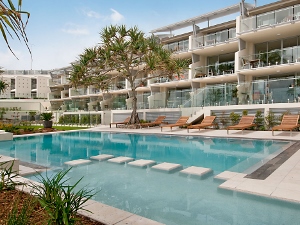Blue Sydney
Today Woolloomooloo finger wharf is home to the magnificent Blue Sydney, a luxury Taj hotel that occupies part of the original wharf building on a sliver of land jutting out into the water.
The heritage building is so huge that it is also home to a large number of apartments, shops, bars and cafes making this one of Sydney’s trendiest entertainment hubs. The redevelopment of the precinct was finally completed in 2000 but for many years it seemed more likely that the old wharf building would be pulled down.
Originally built between 1911 and 1915, the wharf was a hive of commercial shipping activity until the 1970s. Then new container ports, cruise liner facilities and airports in other places around Sydney gradually replaced the wharf’s function. The workers moved away from the area and the derelict wharf building was all that was left of a once thriving centre. In 1987 the New South Wales government decided to pull the building down. To their surprise however, the decision to replace the “ugly eyesore” with a nice new marina was met with howls of protest. For the next six years the government, the heritage council, the conservationists and the developers argued over the future of the wharf building. Placards were waved, fists were raised and finally by 1993 all parties were reconciled and ready to allow work on the re-development of Woolloomooloo wharf to begin.
As you would expect with a heritage building (especially one with this kind of recent history) Blue Sydney retains many original features from its previous life. The large conveyor belts that once carried bales of wool and other commodities from ship to shore now run alongside the elevators. Open spaces are everywhere throughout the hotel retaining the warehouse feel. The 100 guest rooms are equally unique (and large) but the contrast with the open architecture of the communal areas creates a cosy effect. The rooms are loft style, many are split-level with vast beds perched above living areas. Some have views over the bay while others look out over the wharf precinct and entertainment hub. Chocolate brown furnishings add to the retrofit décor.
Taj Hotels, Resorts and Palaces bought Blue Sydney in January 2006 and prior to that it was operated as Starwood Group’s The W Hotel. Taj’s interest in the property stems from its heritage links – the Indian hotel group prides itself on having been acquainting guests with the living heritage of India for the past 100 years. As the group spreads its wings around the world this heritage campaign, combined with a belief in impeccable service, continues to hold true.
General manager of Blue Sydney Mohan Chandran said Taj’s portfolio includes some of India’s oldest and grandest palaces and royal residences. “This hotel fits in very well with our other properties,” he said.
While the Woolloomooloo site was perfect in terms of history and features – with its open spaces, vaulted ceilings and machinery remnants left on display – when Taj bought the hotel in 2006 the technology was a little behind the times. This was due partly to the engineering practicalities of a heritage building and partly to the sheer speed of advancement in technology since the hotel was built in 2000. “When we came in there were still box televisions not flat screens and the hotel only had wired Internet. We decided to upgrade immediately because those things are now considered standard in the luxury boutique hotel market,” said Mohan Chandran.
In the last two years a whole range of upgrades and refurbishments have been successfully carried out at Blue Sydney. As a starting point all 100 rooms now have LCD flat screen televisions. Being a timber heritage building the rooms were lacking in the usual structural support within the walls. Despite this the team was adamant that the new flat screen televisions should be mounted on the wall. “Normally we would clip the televisions onto a desk but here in the bedrooms we were keen to put them on the wall because it provides a much more spacious room for guests,” explained chief engineer Anand Pattan. “It saves space and is also better for guests lying on their beds watching television in comfort.”

The installation team spent many hours locating secure fixing points on the wall in each guest room. “It took some time but we managed to fix them in all the rooms,” said Mr Pattan. At the same time, wireless broadband was installed into every guest room. This was a fairly straight-forward process once the band width had been increased.
Energy conservation was the driving force behind the decision to put variable speed drives onto the pumps for the hotel’s internal air-conditioning system. The pumps send water through all the air-conditioners that are operating at any one time in the hotel. As occupancy drops so the speed of the pump can be reduced which in turn reduces the amount of water being used (and therefore the energy needed to cool it). “When the amount of water drops the speed of the pump automatically drops down so it increases efficiency,” said Mr Pattan. “We invested close to $10,000 on the variable speed drives and now 12 months later it is payback time,” he said. “It was pretty straight forward and a great technology to introduce,” he added.
Large sea water pumps are also used to remove the heat generated by the hotel’s air-conditioning system and Mr Pattan is hopeful that variable speed drives can be installed to increase their efficiency in the near future. But since the sea pumps are shared with the entire wharf development that project will be subject to body corporate approval.
In June 2008 another upgrade was carried out to the hotel’s music system. The award-winning water bar was treated to a new sound system and at the same time all public areas of the hotel were linked to themed music that is chosen for the suitability of its sound and tempo. “We decided to have music with an Indian flavour playing in the living room (Blue Sydney’s name for its reception) while the water bar has a more jazzy feel,” explained IT manager Tavis King. “The music selection is controlled externally but the volume is controlled from within the hotel. Music is classified by beats per minute, so when it is quieter during the day we play slow music and as time moves forward we will up the tempo,” he said. “So at 5pm you might be hearing music that has 60 beats per minute and by 9pm the music that is chosen could have 80 beats per minute. But it is very subtle – the change happens slowly so you wouldn’t notice. Then at 10pm the tempo drops down again,” he said.
The hotel’s banquet room originally contained a projector that had to be pulled down manually and the conferencing technology was slightly out of date. In August 2008 the hotel installed touch screen technology so that CDs and all projections could be controlled from a central point. The banquet room also received a new drop down projector with a screen and lights that go back automatically when it is activated. The conference facilities at the hotel are now state-of-the-art but there was one heritage hurdle that proved too high to jump, at least for the moment. “We wanted to merge two conference rooms together but we needed heritage approval to remove a partition,” explained Anand Pattan. “Being a heritage building does mean there are more barriers plus there are more difficulties actually carrying out the work, so it’s quite challenging that way.”

Technology isn’t only limited to black boxes, touch screens and band widths. The hotel’s housekeepers also have the latest micro-fibre cleaning technology to ensure the rooms are cleaned efficiently, hygienically and with minimum harm to the environment. “The material in the cleaning cloths is made of a special type of micro fibre that allows us to cut back on certain chemicals,” said Mr Pattan. “You get a much better standard of cleaning than with a chemical and it is also a much more hygienic way of cleaning rooms because our cloths are all colour coded. You get one cloth for glass, one for work surfaces and so on. For every hotel room only one set of cloths is used and after that it is going for a wash,” he said.
As part of a global Taj Hotel initiative the database system has recently been upgraded to allow all hotels within the group to share information about guests. “Someone could stay here in Sydney with us and then move to another property in India and all information such as their room or food preference, whether they are vegetarian, can be passed on. This allows us to provide a superior service to our guests,” explained Tavis King. “We have a system that automatically sends the data to every hotel and updates or creates new files every day.
“We have also installed revenue management software that has some forecasting ability and allows us to plan for low or high occupancy. It also has the ability to compute statistics between properties and allows us to determine differences based on area,” he said.
Future plans for Blue Sydney include room refurbishments (including the installation of surround sound) and an upgrade of the phone system. “We’re planning to introduce IP telephones over a data line. This goes beyond digital – it will allow us to use the handsets as a mini computer and display special offers on the phones,” Mr King explained.
Installed some new technology you’d like to show-off? Email ([email protected]) or call (07) 5442 7600

